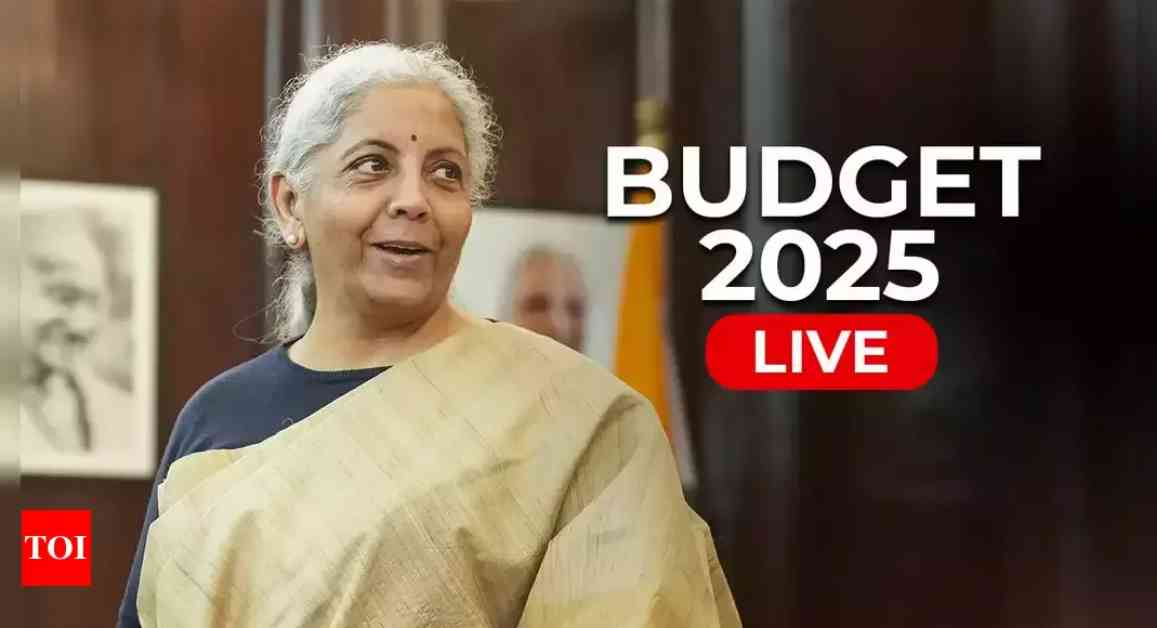The upcoming Union Budget 2025 promises to bring significant changes to India’s economic landscape, with a particular focus on income tax relief, GDP growth, and various sector-specific reforms. The budget session, set to commence on January 31, 2025, will be a crucial moment for the middle class, common man, women, and salaried taxpayers eagerly anticipating potential alterations in income tax slabs and rates.
As Finance Minister Nirmala Sitharaman prepares to unveil the budget, the Economic Survey has projected a potential slowdown in economic growth for the upcoming fiscal year. Despite this projection, the survey highlights India’s robust domestic economic fundamentals, including a strong external account, fiscal consolidation, and stable private consumption. The survey predicts growth for FY26 to fall between 6.3 and 6.8 percent, underscoring the country’s steady growth trajectory.
In recent years, the Modi government has prioritized record capital expenditure on infrastructure sectors as a means to drive economic growth. This trend is expected to continue in Budget 2025, with potential increases in allocations for critical areas such as roadways, highways, Indian Railways, the bullet train project, innovative train sets like Vande Bharat, and railway station redevelopment initiatives. Additional focus is likely to be placed on defense, education, skill development, agriculture, manufacturing, healthcare, travel and tourism, technology, real estate, startups, MSMEs, and artificial intelligence.
The fiscal deficit number is a key indicator that economists and experts will closely scrutinize in FM Sitharaman’s budget speech. Maintaining a delicate balance between providing economic stimulus to boost GDP growth and adhering to the fiscal glide path will be paramount. The budget will need to address various sector-specific challenges and opportunities while navigating the complexities of a rapidly evolving global economic landscape.
—
Income Tax Relief and GDP Growth Focus in Union Budget 2025
The Union Budget 2025 presents a unique opportunity for the Indian economy to realign its trajectory towards sustainable growth and innovation. One of the critical areas of focus in this budget is income tax relief, with potential revisions to tax slabs and rates aimed at boosting disposable income and enhancing consumption. Experts predict that moving under the New Tax Regime could optimize revenue foregone while strengthening social security, financial stability, and healthcare provisions.
SBI Research suggests several scenarios for tweaking tax rates, such as reducing the peak rate to 25% for incomes above 15 lakhs and eliminating exemptions while retaining healthcare and NPS deductions. These adjustments could lead to substantial revenue losses for the government but offer significant benefits in terms of boosting consumption and investment through higher incremental capital output ratio (ICOR). The optimal scenario identified by SBI Research involves a balanced approach to tax revisions, focusing on enhancing social security benefits and healthcare provisions.
—
Transformative Reforms and Sector-Specific Expectations in Union Budget 2025
As India charts its course towards becoming a developed country, transformative reforms in the financial services sector are expected to drive growth and innovation. The budget is likely to focus on simplifying regulatory frameworks, incentivizing technological advancements, enhancing financial inclusion, and promoting ease of doing business. Emphasizing previous budget themes while introducing new measures to stimulate growth across various sectors will be crucial for India’s economic expansion.
Key sectors such as banking, financial services, insurance, and merchandise exports are poised to undergo significant changes in Budget 2025. Addressing tax disparities for foreign bank branches, abolishing the Securities Transaction Tax (STT), and providing tax benefits for non-banking financial companies (NBFCs) are among the anticipated reforms. Incentives for the Gift-IFSC and strategic tax relief for sovereign wealth funds and pension funds could further bolster India’s financial ecosystem and global competitiveness.
—
To sustain medium-term growth and promote Atmanirbharta across sectors, the budget is expected to implement a comprehensive strategy that leverages India’s strengths while addressing existing challenges. A multipronged approach focusing on infrastructure development, human capital enhancement, innovation, and industry competitiveness will be essential for achieving the desired growth trajectory. Balancing fiscal prudence with strategic investments in critical areas will be key to realizing India’s vision of becoming a developed nation.























